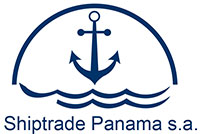The Seaworthiness of the Vessel
The Owner must deliver the ship to the Charterer in a perfect condition of seaworthiness. To the Charterer it is not enough that the ship is seaworthy at her delivery but that she remains seaworthy during the whole chartering period.
BALTIME (Clause 3, Owners’ Obligations): “…. and maintain her in a thoroughly efficient state in hull and machinery during service”.
GENTIME (Clause 11, Owners’ Obligations): “…… and shall exercise due diligence to maintain the Vessel in such Class and in every way fit for the service throughout the period of the Charter Party”.
NYPE 93 (Clause 6, Owners to Provide): “…. Shall maintain the Vessel’s class and keep her in a thoroughly efficient state in hull, machinery and equipment for and during the service, …..”.
This clause must be very specific in case of a long term charter agreement and the necessary details about the seaworthiness of the vessel must eventually be given in an additional clause. In this respect, reference must also be made to other clauses which deal with the liability in case of damage to the vessel and possible responsibilities and exceptions. (See also GENTIME, Clause 18, Responsibilities and Clause 19, Exceptions, BALTIME, Clause 12, Responsibility and Exceptions.) Click on BALTIME for a worked-our Baltime Charter Party.
In any case, the seaworthiness of the vessel is one of the “warranties” on which the Owner cannot withdraw from unless the charter party states to the contrary.
According to Clause 12 of the BALTIME and Clause 18 of the GENTIME, the Owner is responsible for damage to the cargo if before and at the beginning of each voyage he did not exercise due diligence to make the vessel seaworthy. This is in agreement with the Hague-Visby Rules (Article III, 1°).
How can the Owner prove that he exercised the necessary diligence to make his ship seaworthy? He should especially consider following points:
Make sure that all ship’s documents are valid and that they are on board. The national (Certificate of Seaworthiness where applicable) the international certificates of safety (Cargo Ship Safety Construction Certificate, Cargo Ship Safety Equipment Certificate, Cargo Ship Safety Radio Certificate, International Load Line Certificate, etc.) Certificate of Registry, International Tonnage Certificate, Classification Certificates, Ship’s Articles, etc. (See also paragraph Ship’s Documents and Certificates.)
See to it that the ship is equipped to start and to terminate the voyage. This encompasses:
– the voyage planning;
– that the necessary charts and sailing instructions (pilot books, Lists of Lights, etc) are on board and properly corrected;
– that the Notices to Mariners are on board so that the charts and other nautical publications can be corrected. If the necessary charts for the voyage are not corrected, than the Charterer will consider the vessel as not being seaworthy.
– give the master the necessary instructions about the points which must be entered in the log book and which are related to all the precautionary measures and proceeding which must be taken before loading and before leaving the harbour.
With regard to the loading, all holds and hatch covers must be thoroughly inspected, the bilges and the loading gear must be tested, etc. Before the departure of the vessel, the master must check if the full crew is on board, if there are no stowaways on board, if the nautical instruments on the bridge are fully operational, if everything is in order in the engine room and with the radio equipment, if there are enough provisions on board, etc. In a word, ensure that everything is on board and in order to reach the next harbour. (See in that respect the “Company Regulations” or “Instructions to Masters” and Formalities on Departure.)
When, in case of damage to the goods, the responsibility can not be determined, the Charterer can ask for the assistance of a “P & I Club for Charterers” namely, the “Intern Club New York Produce Exchange Agreement” who will then negotiate with the Owner’s P & I Club. In most cases a 50/50 arrangement is strived at.
